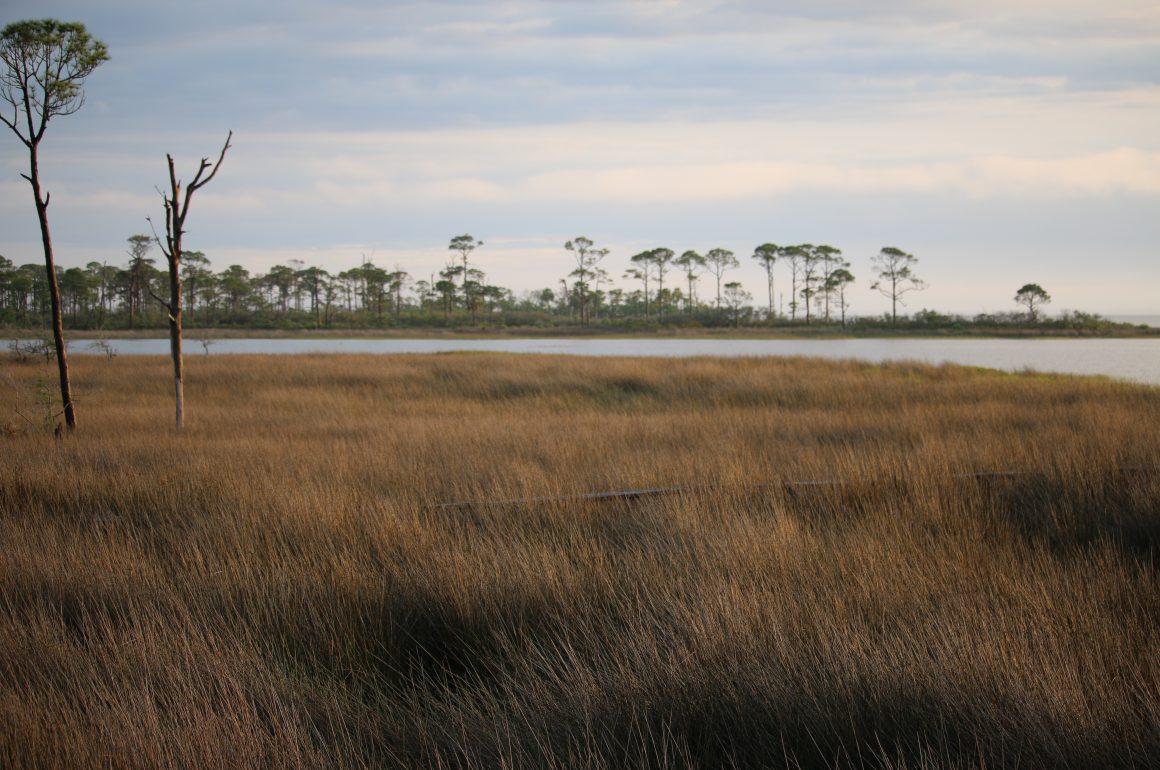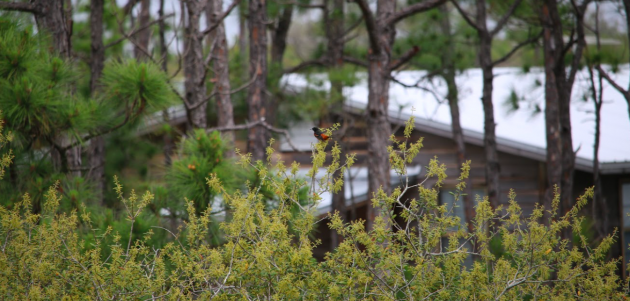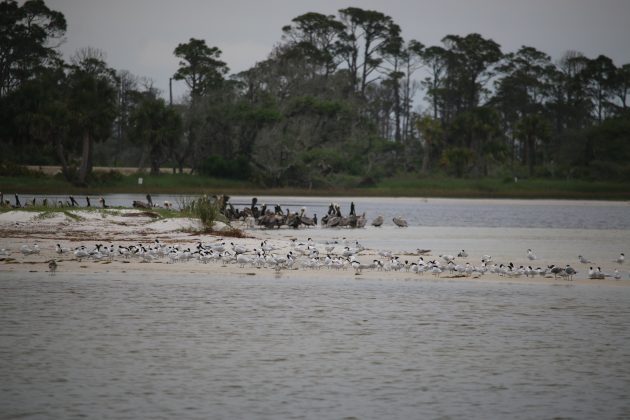
Note: Erika is the Communications Director for Audubon Florida.
A flash of orange streaked across my field of vision, landing at the top of a nearby tree. I whipped my binoculars out, then threw them down in favor of a camera with a long lens. Click click click. I snapped as many photos as I could before the bird disappeared into the canopy. Zooming in, I let out a whoop and fist pumped the air. An Orchard Oriole! A life bird for me, and another species for my Audubon Florida Birdathon checklist.

2021 marked the second year I participated in a Birdathon for Audubon Florida. Birdathons are typically used by state programs and chapters to raise critical funding for conservation and research programs. The rules vary, but essentially you count as many birds as you can, and supporters pledge a flat gift or per-bird gift in honor of your efforts. It is super fun – a way to get out there and bird with friends and co-workers.
Though this was my second year, it was truly the first time I participated in a “normal” Birdathon. In 2020, our Birdathon efforts came in the midst of the Covid-19 pandemic, when lockdowns and restrictions remained common. To make sure our staff, volunteers, and members stayed safe, we asked birders to stick to their backyards, and we aggregated tallies across groups: staff vs. members. Don’t get me wrong – we had a blast comparing the birds in our yards, and it was a great reminder of all the species we can see right from our backdoors, but in 2021 I looked forward to a Birdathon that was a bit more mobile.

I happened to be in Cape San Blas on the Gulf Coast of Florida during the Birdathon, so I snagged migrating species that took refuge in the tree stands near our rental house. Marsh grasses added a Marsh Wren to my list, while I picked up seabirds – including a Northern Gannet – from the Gulf of Mexico-side beach. Ending the day at St. Joseph Peninsula State Park, I added terns and shorebirds, ending the day with 50 species in total. Given that I birded with a toddler the entire day – who needed to go home for two naps – I celebrated my tally.
Adding my birds to the 23 other staff members who birded that day, the Audubon Florida team recorded 183 species. The most common species we shared amongst our list? The Red-bellied Woodpecker.
Our members and friends similarly combed Florida for birds, with 239 checklists totaling more than 950 hours of birding!
I loved the 2021 Birdathon, and have begun thinking of ways to wrack up way more bird species in 2022.











With a toddler in tow? Well done!